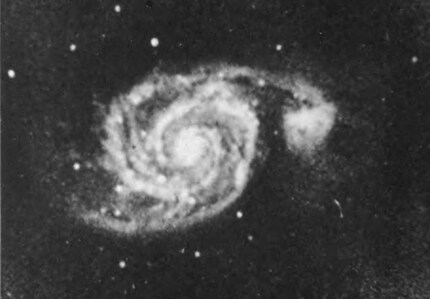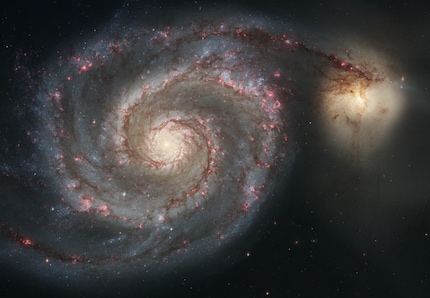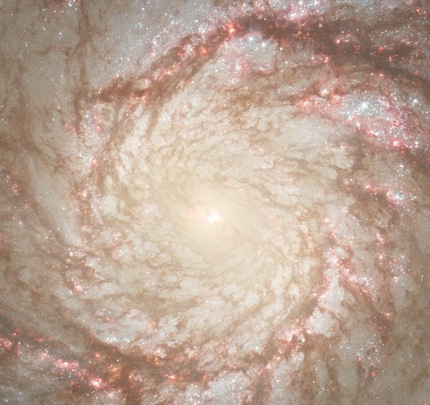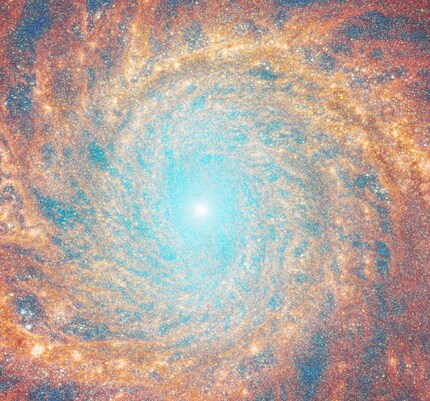
James Webb telescope portrays Whirlpool galaxy
The James Webb telescope shows the conspicuous galaxy M51 in unprecedented detail.
The James Webb Space Telescope (JWST) has once again delivered an impressive image. It shows the galaxy M51, also known as the Whirlpool Galaxy. It has a very pronounced spiral shape, presumably due to the gravitational force of the neighbouring dwarf galaxy NGC 5195, and was first photographed back in 1898.

Source: Isaac Roberts
With the Hubble telescope, things look a little better. This image was taken in 2005.

Source: NASA, ESA, S. Beckwith (STScI), and The Hubble Heritage Team (STScI/AURA)
Unlike the Hubble telescope, the JWST mainly images infrared radiation. Including far infrared. This reveals significantly more details, especially of extremely old and distant celestial bodies. The image combines images from the near and far IR range. The infrared waves, which are invisible to the human eye, are translated into various shades of yellow, orange and red. The orange and yellow tones indicate ionised gas from young star clusters. The M51 galaxy shows an unusually high level of star formation activity.
Here is a comparison of the two images based on the centre of the galaxy.


The European Space Agency ESA offers both images in high resolution for download: here the image from JWST and here from the Hubble telescope.
My interest in IT and writing landed me in tech journalism early on (2000). I want to know how we can use technology without being used. Outside of the office, I’m a keen musician who makes up for lacking talent with excessive enthusiasm.